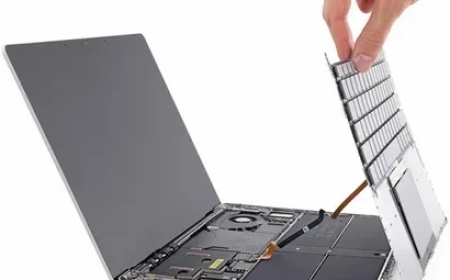All the Features and working mechanisms of an Air Washer Unit
Explore all the key features and working mechanisms of an Air Washer Unit. Learn how it functions, its components, and its role in improving air quality and humidity control in HVAC systems.

All industrial hubs are prioritizing the air quality and energy-efficiency factors. Nowadays, an air washer unit is trusted for purifying, humidifying, and cooling air efficiently. To maintain quality air, these AHUs have become most important in commercial spaces.
The air handling unit design is such that it can accumulate impurities in the air and generate fresh, clean air. Particularly, such a system is appropriate for textile mills, pharmaceuticals, shopping malls, and data centers. Know about working mechanisms, features, and more about the AHUs.
Working of Air Washer Unit Technologies
To state, an air washer unit is a hybrid system that can both clean as well as cool the indoor air. By using the principles of evaporative cooling, it combines the functions of filtration, humidification, and cooling. For trapping dust particles, it sprays water into the air stream and modifies humidity levels.
The mechanism of AHUs is based on some key components like the inlet, spray chamber, and demister section. To start with, fresh and ambient air enters through filters, which clear out the debris. Following this, the air would pass through the high-pressure spray zone. The high-pressure zone later reduces atomized water droplets through the nozzles of the distribution system. Whenever the air get in touch with the sprayed water, the particulate matter gets trapped or washed out. The air handling unit design is such that the water would evaporate into the air stream, reducing temperature through the process of adiabatic cooling.
Following that, the cooler and humidified air would pass through the demister plates that remove excess water droplets. Once done, the cleaner air passes into the duct and transforms the space into a cooler and better place. This entire process increases humidity, reduces temperature, and removes suspended particles, making air washer units highly effective in both dry and moderately humid climates.
Features of AHUs
An air washer unit arrives with an integrated design that has some operational features, making it an efficient solution for larger-scale HVAC systems. Such as:
-
Advanced air filtration
An air washer system is known for efficient cleaning and removing of dirt, dust, and suspended particles. Initially, the filters are either dry or washable, which later changes with multiple usage.
-
Controls Humidity
The air handling unit design is ideal for dry climates. Specifically, the washer units maintain a humidity of up to 60-60% in arid climates. Such occurrences prevent static electricity in sensitive environments.
-
Evaporative Cooling
The amazing part of the air handling unit design is its manipulation-free cooling. AHUs or washer systems have the quality of reducing temperature without any need for refrigerants. So, in comparison to conventional cooling mechanics, it is popular for saving energy.
-
Lesser Operational Cost
Unlike air conditioning units, an air washer unit consumes less energy and therefore has a lower operational cost. Instead of a compressor, the unit works with the help of water and fans.
The Relation Between AHUs and Air Washer Systems
In large-scale HVAC systems, air washer units play a vital role in optimizing Air Handling Unit (AHU) design, particularly in industrial and semi-commercial settings. They can be integrated before or after cooling coils based on desired air conditions and are compatible with both horizontal and vertical airflow setups.
Air washers often come within central AHU casings, and you can control them via Building Management Systems (BMS) or PLCs, using humidity sensors and VFDs for smart regulation.Combined with energy recovery wheels and multi-stage filtration (HEPA or carbon), they enhance efficiency and air quality.
FAQ
-
Can air washer unit designs be customized?
The design of washer units is not uniform, and users can modify them as per their choices.Often, the design is integrated into larger AHUs or can also be designed in modular types. Similar to that, such designs have tailored spray banks, fans, and filter arrangements.
End Thoughts
An Air washer unit use water to condition air, making them energy-efficient and easy to maintain. Whether used on their own or as part of a larger HVAC system, air washers help improve air quality and reduce energy use. If you're planning a new air system or upgrading an old one, adding an air washer can boost performance and lower your environmental impact.




































